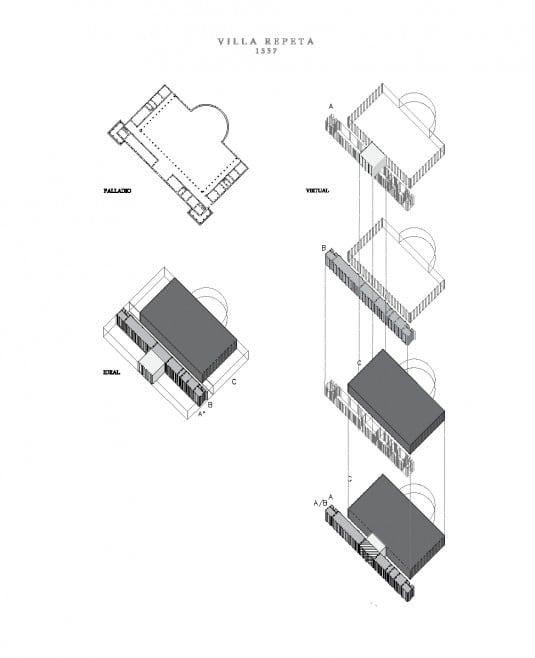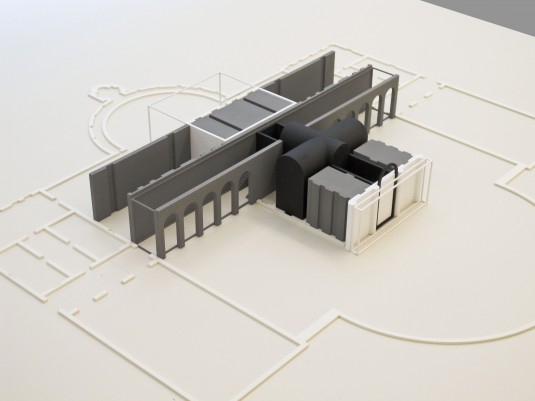
September 1, 2012
Tracing Palladio in Peter Eisenman’s Works
Close your eyes and imagine a villa. You know, one with carefully proportioned walls, perhaps balanced along a systematic floorplan. Maybe the elevation can fold onto the floor – or superimpose the walls and roof plans to the exterior facade – and volumes match-up at invisible intersections. Any of this sound familiar? Architecture 101 anyone?Villa […]
Close your eyes and imagine a villa. You know, one with carefully proportioned walls, perhaps balanced along a systematic floorplan. Maybe the elevation can fold onto the floor – or superimpose the walls and roof plans to the exterior facade – and volumes match-up at invisible intersections. Any of this sound familiar? Architecture 101 anyone?
Villa Rotonda Model overlaid with axonometric,
Image by Peter Eisenman and Matt Roman
In the 20th century, a villa like this would have to be Peter Eisenman’s. Bring it back 500 years and you’d have Andrea Palladio. Clearly inspired by Palladio’s life work, Eisenman’s built and unbuilt houses of pearlescent walls have greatly echoed Palladio’s timeless villas. Through the 1970’s, Eisenman produced well known villa conceptual drawings. Like Palladio’s, his drawings weren’t always physically possible, rather intellectual exercises of a perfected architecture.
Now at the Yale School of Architecture, Eisenman’s about to show just how well he knows the master. Closing October 27th, the exhibition Palladio Virtuel showcases Eisenman’s 10 year long study of Palladian Villas.
 Villa Foscari Axonometric,
Villa Foscari Axonometric,
Image by Peter Eisenman and Matt Roman
The show exhibits diagrams and models reinventing the way we view Palladio’s genius. Co-curated with Matthew Roman, three sections – The Classical Villas, The Barchessa Projects, and The Virtual Villa – divides the exhibition.
20 models and over 100 drawings represent the projects ranging throughout the 16th century. Reconstructing the villa’s masses, Eisenman color codes the typical room functions in various shades of gray. The system allows for clear analysis spanning the length of Palladio’s career – he placed the loggia here versus there, etc. Ultimately the study pushes for a critical view of the master’s work; Palladio’s designs didn’t adhere to unified archetypes of what a villa should be, but transformed continuously throughout his career.
 Villa Barbaro Maser Model,
Villa Barbaro Maser Model,
Image by Peter Eisenman and Matt Roman
Sben Korsh is a BA candidate studying both architecture history and writing through the CUNY Baccalaureate Program for Unique and Interdisciplinary Study. He is a City College Fellow and Weston Public Service Scholarship recipient. Follow him on Twitter @SbenKorsh





